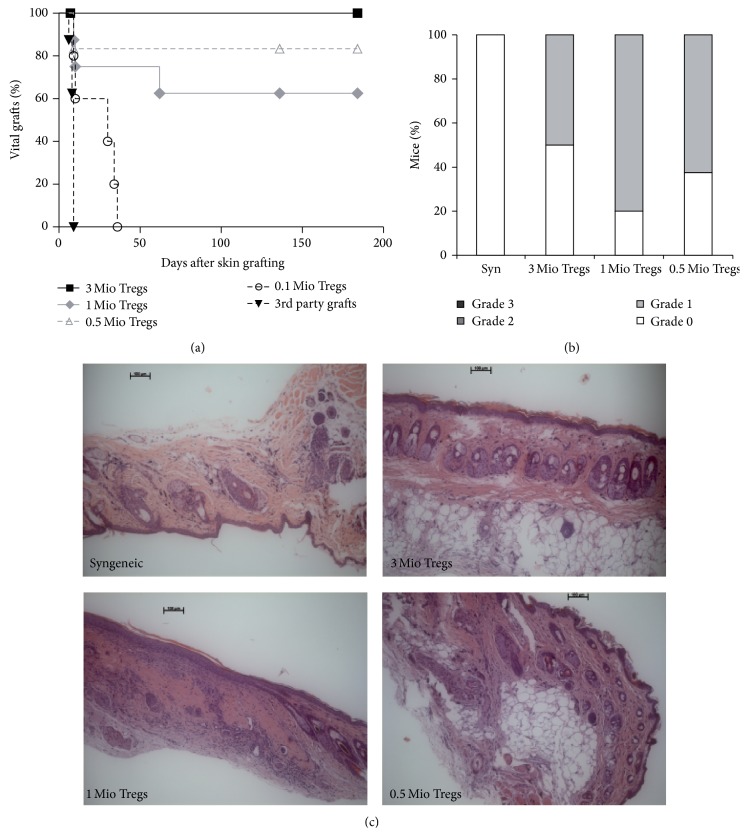Figure 3.
Tolerance is successfully induced in chimeras that received low-dose Treg therapy. Donor-specific tolerance was assessed by grafting of donor and third-party skin 4–6 weeks after BMT. (a) Donor skin graft survival was significantly prolonged in BMT recipients treated with Treg numbers that have been shown to be sufficient to induce chimerism (■ 3 × 106 cells, n = 4; ◆ 1 × 106 cells, n = 8; ∆ 0.5 × 106 cells, n = 6; ○ 0.1 × 106 cells, n = 6; ▼ pooled third-party grafts, n = 24). Survival was calculated according to the Kaplan-Meier product limit method and compared between groups using the log-rank test (p < 0.05 for 0.1 × 106 cells versus each other group). (b) Classification of skin allograft pathology for syngeneic grafts (n = 4) and Treg treated groups (3 × 106 cells, n = 8; 1 × 106 cells, n = 8; 0.5 × 106 cells, n = 5; 0.1 × 106 cells, n = 8) are shown [22] (Grade 0: no or rare inflammatory infiltrates, skin architecture intact; Grade 1: mild inflammatory infiltration, no involvement of overlying epidermis; Grade 2: moderate perivascular inflammation with mild epidermal/adnexal involvement; Grade 3: severe inflammation, atrophy of epidermis, dyskeratosis, and/or keratinolysis). Data are representative for at least 2 independent experiments per group. (c) Representative histology from skin grafts of Treg treated groups and syngeneic controls (>120 d after skin grafting; HE staining magnification ×100) is shown.

